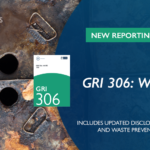
Organizations can now link the world’s leading sustainability reporting standards with an innovative tool for measuring their progress towards the circular economy. GRI 306: Waste 2020 is the first globally applicable reporting standard for companies to provide a complete picture of waste impacts along their value chain. Circulytics from the Ellen MacArthur Foundation – the global thought leader for the circular economy – is a tool that enables any business to assess circular economy performance in its operations.
The Circulytics and GRI 306 linkage document provides an overview of the disclosures in the GRI Waste Standard and maps them against the relevant Circulytics indicators. This enables companies to use the data they already collect for their GRI reporting to complete a Circulytics assessment, providing results that can enhance sustainability reporting. Access to the GRI Standards and Circulytics are both free of charge.
Anna Krotova, Senior Manager – Standards, GRI, said: “The GRI Standards enable organizations to communicate their impacts in a way that is globally comparable, creating information that can be used by companies and their stakeholders for multiple purposes. When it comes to understanding waste impacts, circularity is a central focus of the GRI Waste Standard.
There are strong parallels between GRI 306 and the Circulytics tool. We would encourage organizations to assess the benefits that come from adopting circular economy practices, as supported by combining GRI reporting on waste with the metrics and insights from Circulytics.”
Nikki Kapp, Project Manager, Data and Metrics, Ellen MacArthur Foundation, said: “We think it is important that Circulytics users can collect relevant data from the reporting they already do, to avoid added workload. Therefore, since many companies globally use the GRI Standards in their non-financial reporting, we decided it was important to map the Circulytics indicators to GRI 306 and will continue to do so with other GRI Standards where there is an overlap.”
How does Circulytics work?
- Circulytics was developed as a comprehensive measurement tool for the circular economy, looking beyond products and material flows
- A company submits responses against a set of indicator questions, leading to a scorecard on circular economy performance, at the company level
- The results can inform decision making and strategy development on circular economy transition, with opportunities to share the scoring with investors and customers
What are the key features of GRI 306?
- This Standard supports reporting on the waste-related impacts of activities, products and services, enabling organizations to identify circularity and waste prevention opportunities
- Companies are encouraged to assess waste throughout the value chain, identifying management decisions and actions that lead to a fundamental re-design of their business model and operations
- Published in May 2020, it updates previous GRI disclosures on waste, responding to global concerns about increases in waste generation and the associated sustainability impacts



